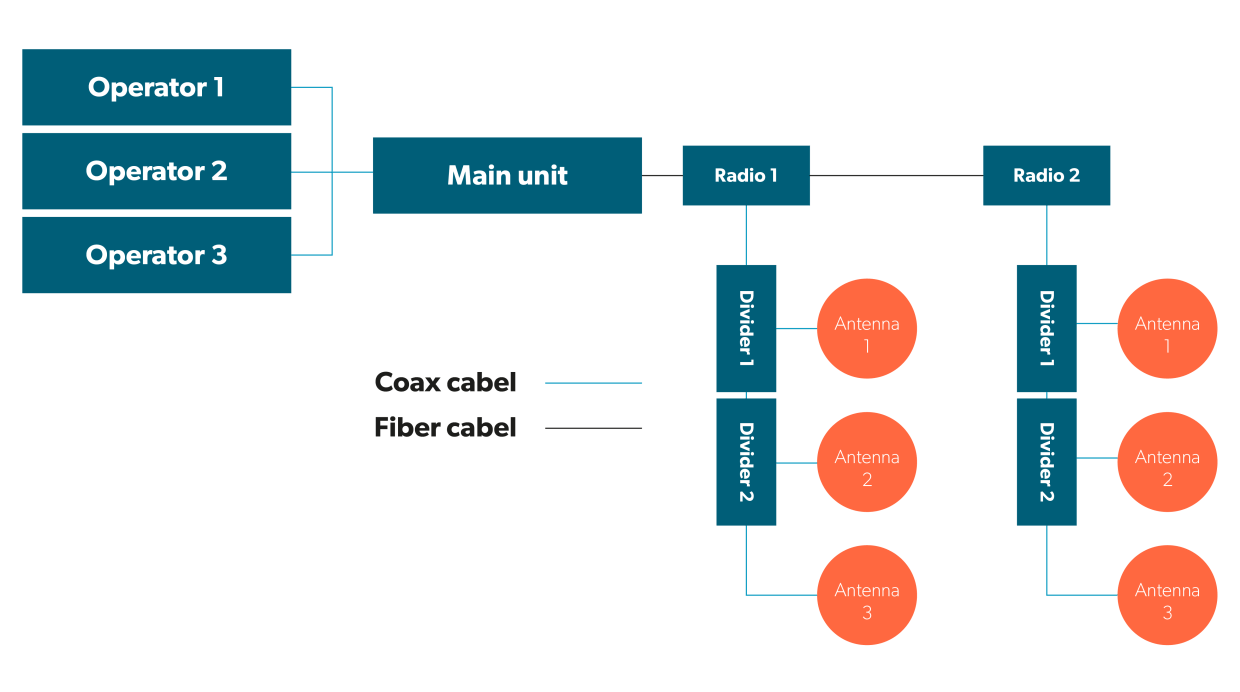DAS
Active or passive DAS?
There are three main types of DAS installations (Distributed Antenna System).
A passive DAS system distributes the signal from the mobile operators’ base stations via a network of antennas, and normally covers indoor areas of 12–15.000 square metres. A passive DAS system is ideal for smaller buildings in which you don’t need to actively monitor how the system is working.
This is the cheapest solution that also requires a minimum of maintenance. The solution can be implemented for one or more operators.

Passive DAS system
A hybrid DAS system is often used with multiple operators. With this solution there are no size restrictions for the building. It is possible to upgrade to new frequencies and you have the option of monitoring remotely, thus making it possible to achieve faster-reacting, more cost-effective service and troubleshooting.
Note that there can not be more than 20 kilometers from the main unit to the Radio.

Hybrid DAS system
In an active DAS system, the signal is distributed indoors over a network of antennas, via active sub-units that each provide a separate signal. This means such systems are able to cover much larger buildings and building complexes, or even areas with several buildings.
Such distributed signal transmission units provide better scalability and flexibility. Active systems can also be monitored remotely, thus making it possible to achieve faster-reacting, more cost-effective service and troubleshooting.
This is the most complex solution. But there are no size restrictions and it is possible to have multiple operators. It’s easy to upgrade to new frequencies and you are able to use your own Cat6a/fiber.

Active DAS system




